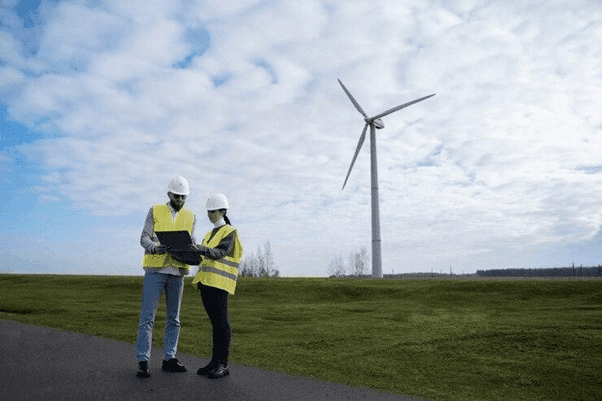Revolutionizing Renewable Energy: Nokia Powers TenneT’s North Sea Wind Energy Project

In an ambitious step towards sustainability, Nokia is set to play a pivotal role in TenneT’s groundbreaking project to harness wind energy in the Dutch North Sea. Teaming up with industry giants like GE Vernova and Hitachi Energy, this initiative aims to support the global transition from fossil fuels to renewable energy sources. Wind power has emerged as one of the most mature and commercially viable forms of renewable energy, poised to be a game-changer in achieving climate neutrality targets.
TenneT’s Vision for Offshore Wind Energy
TenneT has commissioned the development of eight offshore platforms, each capable of delivering 2 gigawatts (GW) of renewable energy. These platforms will act as crucial nodes in transmitting energy from offshore wind farms to the mainland, significantly bolstering the region's renewable energy capacity. The overarching goal is to ensure a sustainable energy supply while addressing climate change challenges.
To facilitate this ambitious project, TenneT has formed three consortia: the Petrofac and Hitachi Energy consortium, the GE Vernova-Seatrium consortium, and the GE Vernova-McDermott consortium. Each group is tasked with delivering the cutting-edge offshore converter platforms along with onshore grid land stations necessary for effective energy distribution.
Nokia’s Optical Networking Technology
Central to TenneT’s offshore wind infrastructure is Nokia's state-of-the-art optical networking technology. As the chosen provider, Nokia will implement its 1830 PSS DWDM (Dense Wavelength Division Multiplexing) solution, establishing a robust communication network that connects the offshore sites with onshore telecommunications infrastructure. This optical network transmits data via light through thin glass tubes, ensuring quick and efficient data transfer essential for monitoring and managing the offshore platforms.
Subhagata Mukherjee, Nokia’s Vice President and Global Head of Sustainability, emphasizes the importance of this technology, stating, “Energy security and climate transition can go hand in hand - if smart, mission-critical communication networks can power them.”
The deployment of Nokia’s systems will enhance the operational efficiency of the wind parks, enabling continuous energy transmission and remote monitoring of the platforms.
Enhancing Connectivity for Energy Independence
Marco Kuijpers, Director of Large Projects Offshore at TenneT, acknowledges the essential role of connectivity in the project's success: “As we expand our offshore energy infrastructure, connectivity becomes more important than ever.” He adds that Nokia’s standardized optical network is crucial for the seamless operation and management of the platforms, allowing for remote oversight and operation.
With this partnership, TenneT aims to move towards a more self-sufficient energy supply, aligning with the global renewable energy deployment goals established at COP28.
A Timeline for Sustainability
The implementation of Nokia’s optical networking technology is set to commence in early 2025, coinciding with the initial phases of construction for the offshore platforms. The timeline outlines a full operational readiness target for the first platform by 2029, marking a significant milestone in renewable energy deployment.
James Watt, Senior Vice President and General Manager of Nokia’s Optical Networks business, highlights the integration of digital technology in green initiatives: “At Nokia, we know that ‘there’s no green without digital’. This project demonstrates that principle in action.” By providing high-performance optical networking solutions tailored for the unique demands of offshore environments, Nokia is not only supporting TenneT but also contributing to the broader goal of delivering reliable green energy to millions across the Netherlands and Europe.
As Nokia, TenneT, and their partners embark on this transformative journey, they are not just constructing energy infrastructure; they are building a sustainable future. This collaboration exemplifies the synergy between digital technology and renewable energy, setting a benchmark for future projects in the quest for climate neutrality. Together, they are paving the way for a greener, more sustainable tomorrow.
Business News
How Fashionphile Founder Built a Luxury Resale Empire from eBay to Millions
How Executives Can De-Risk Payment Operations in Regulated Industries
Why Your Engine Air Filter Plays a Bigger Role Than You Think
Phoebe Gates-Backed Startup Secures US$30 Million Investment to Fuel AI Shopping Platform
Anthropic’s AI Bubble Warning: A Call for Caution in the Hype-Driven Race




















